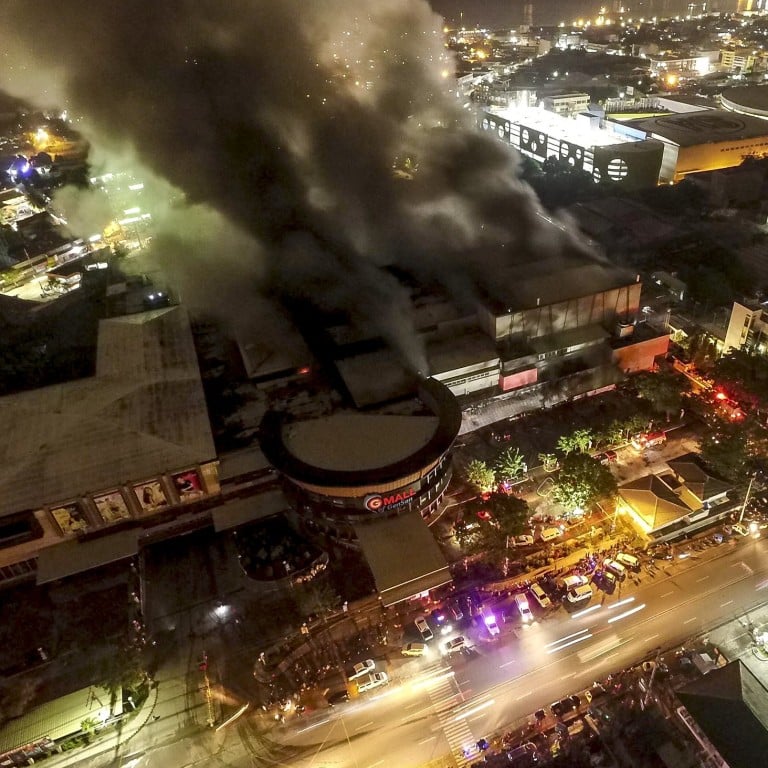
Southern Philippines rocked by 6.3-magnitude earthquake, leaving four people dead
- The Philippines is one of the world’s most disaster-prone countries, with frequent typhoons, earthquakes and volcanic activity
- It lies on the Pacific ‘Ring of Fire’, the arc of faults around the Pacific Ocean where most of the world’s seismic activity occurs
The Office of Civil Defence said on Thursday morning that two people died and 18 were injured in a landslide set off by the quake in Magsaysay town in Davao del Sur province. ABS-CBN television network reported two more deaths elsewhere, including a girl hit by a collapsed house wall.
The Philippine Institute of Volcanology and Seismology said the 6.3-magnitude earthquake Wednesday night was centred 22km southeast of Tulunan in North Cotabato province at a relatively shallow depth of 8km. More than 200 aftershocks have been recorded.

The US Geological Survey placed the magnitude at 6.4 quake with a depth of 14km. Shallow quakes tend to cause more damage than deeper ones.
OCD said at least 27 people were injured in the landslide in Magsaysay or from falling objects and collapsed concrete walls.
Some areas lost power, including the transport hub of Kidapawan city. A fire broke out in the Gaisano shopping centre in General Santos city soon after the quake, but there were no reports of people trapped.
Vice Mayor Joselito Pinol of North Cotabato’s M’lang town said patients were evacuated out of a hospital to ensure their safety during the quake. Several buildings were damaged, including Pinol’s office, where the glass-windowed facade fell.
Fake news sparks panic among Indonesia quake victims
Schools in quake-hit areas, including the president’s hometown of Davao city, suspended classes on Thursday so buildings could be inspected for damage. President Rodrigo Duterte was in the capital, Manila, when the quake struck.

“We felt a very strong jolt and there was a blackout. I saw people rushing down. We were panicking, heading to the exit,” said Naru Guarda Cabaddu, a hotel consultant visiting Kidapawan City between the epicentre of the quake and Davao.
A community at the foot of a mountain had to evacuate because of more than 200 aftershocks.
“I was driving back home when I felt a very powerful shake. I stopped and saw people and patients running out of the hospital,” said Raprap Rafael, a resident of Kidapawan City.
The Philippines is one of the world’s most disaster-prone countries, with frequent typhoons, earthquakes and volcanic activity. It lies on the Pacific “Ring of Fire”, the arc of faults around the Pacific Ocean where most of the world’s seismic activity occurs.
A magnitude 7.7 quake killed nearly 2,000 people in the northern Philippines in 1990.
Additional reporting by Reuters

